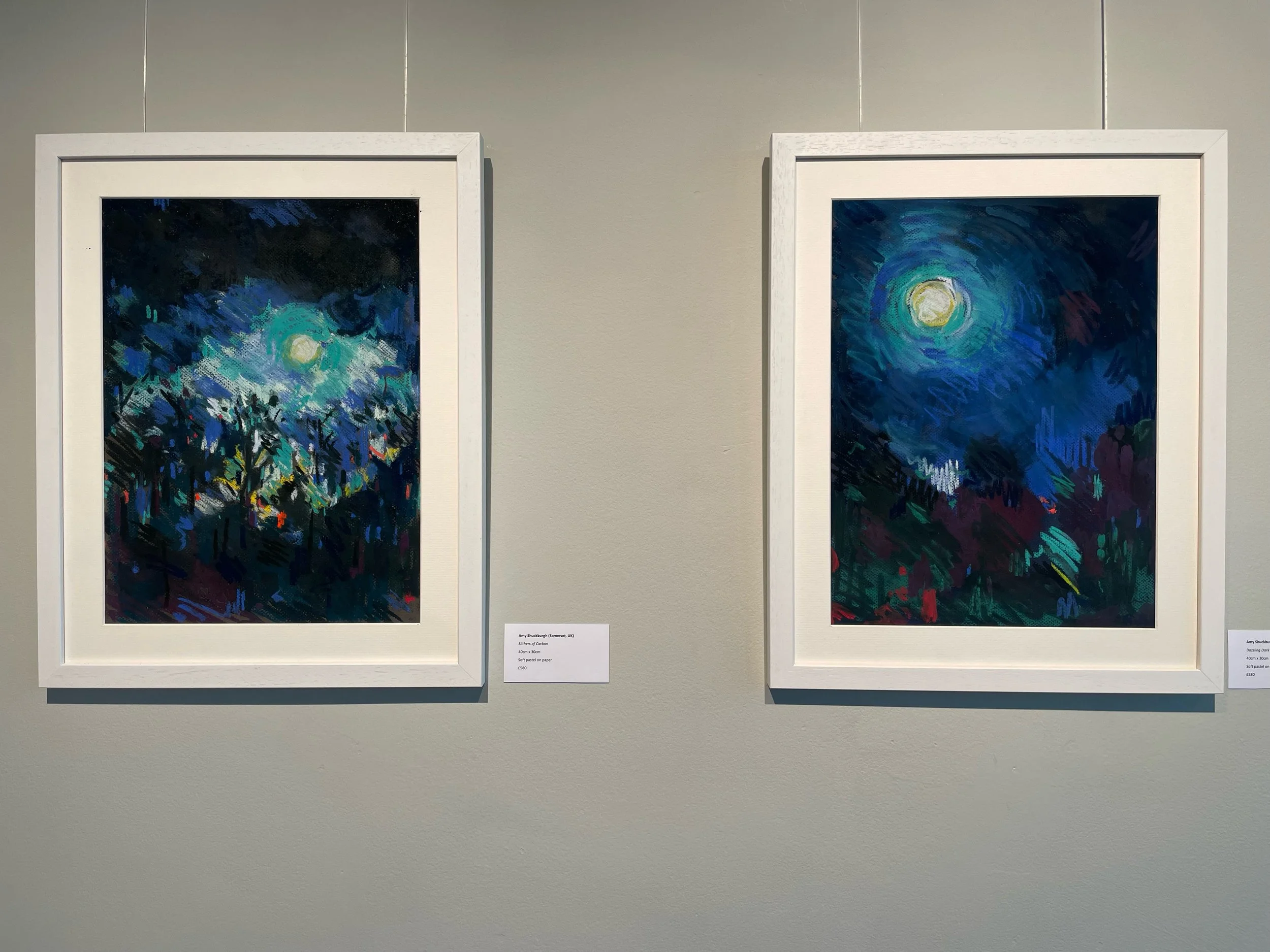The Magic of Dark Skies at The Sill, Northumberland
15 March - 12 May 2024
This interview originally appeared on the Unison Colour blog
AMY SHUCKBURGH
Associate Artist of Unison Colour interviewed by Lucy Brangwin
Amy Shuckburgh, based in Somerset, is known for her beautifully expressive strokes and light energetic landscapes as well as still life, and figurative work, using soft pastel, oil paint and collage. She is also renowned for her vibrant pictures of the west country, Cornwall, France and Wales.
1. What inspired you to create these artworks for Unison Colour Soft Pastels representing Dark Skies?
Living in rural Somerset, our cottage is off-road, so we have to walk about 200 yards to get to our front door, and at night the darkness is extraordinary, intense and visceral. I was obsessed with looking for the moon which rose over the tops of the trees at the end of the garden, and later in the night to see how the moonlight flooded the fields. I wanted to draw the feeling of inkiness and disorientation; the shift in perception of the other senses when in the proper dark in such a remote spot.
2. How did you approach capturing the essence of Dark Skies in your artwork?
I took photographs and film of the woods in the dark, and then finding the source material failed to fully capture the feeling of being outside in the dark, I worked predominately from memory which allowed me more freedom.
3. Can you tell me about the techniques or additional mediums you used to convey the feeling of Dark Skies, and show stages of the creative process that you went through to complete your piece ?
I used pastel paper for the smaller works and special course-grain pastel card for the larger piece which takes the pastel so well it’s a joy to use. I also tried the sparkly pastel dust that Unison Colour wanted me to experiment with, but I prefer the way vibration and dazzle can be created through a combination and interplay of pigment and colour. I worked over some of the drawings in pencil and built them up in layers over time.
4. Did you encounter any specific challenges to this piece, and if so, how did you overcome them ?
I find capturing darkness quite counter-intuitive because I like to work in vivid and sometimes unexpected colours and even my nocturnal scenes tend to incorporate a wider palate. Working with a limited palate provided by Unison Colour for this project was tense as I wanted to bring in other tones, but I followed the rules obediently! Having confines in a process is cathartic in a way though, and I like a challenge.
5. What emotions or atmospheres were you aiming to evoke in viewers with this piece?
What appeals to me about nightscapes is the sense of mystery and the tangle of senses, so I hope that there is enough confusion when looking at my drawings to keep the viewer searching. Of course there is also calm and tranquillity of a kind to be found in the darkness, but I am more interested in leaving things unexplained and ambivalent.
6. Did you draw from personal experiences or specific locations when creating this representation of Dark Skies?
My own personal experience of my home in Somerset was completely critical to these pieces. Celebrating the location and my love of the place was my main intention. Since being invited to take part in this exhibition, and doing the work, I have moved back to London, so the pieces I created in the dark at home carry even more significance for me, as a testimony to the years I spent living in this remote and beautiful place.
7. How do you think your artwork contributes to the broader conversation about preserving and appreciating natural darkness?
I wrote a poem to accompany the work I am showing in the exhibition, in which I explore and expand on the ideas of escape and sanctuary, of a greater connection with life and also with death, which I feel most intensely when I’m in nature. In the dark we really see.
“Someone I loved once gave me a box full of darkness. It took me years to understand that this too, was a gift.”
Mary Oliver
8.Where can we see more of your art?
Instagram: @amyshuckburghart
Website: www.amyshuckburgh.com




